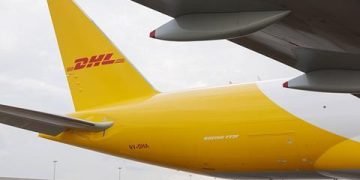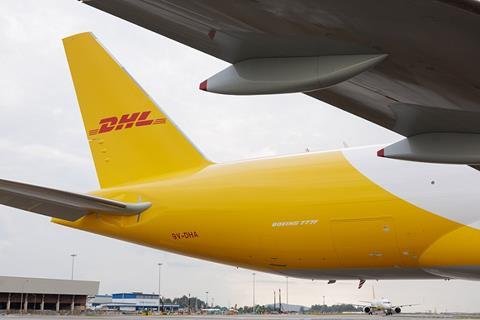DHL’s airfreight business eased in the third quarter, reflecting a market that has come off the boil without collapsing. Volumes were essentially stable while revenue stepped down as yields normalized across key lanes.
Volumes. DHL reported 444,000 tons handled in Q3, a 0.2% dip from 445,000 tons a year earlier—“largely unchanged momentum vs. Q2,” the company said.
Revenue & profit mix. In the Global Forwarding, Freight (GFF) division, airfreight revenue fell 7% year on year to €1.5 billion, but gross profit increased 5.9%, underscoring tighter yield discipline and a shift toward higher-value cargo. Total GFF revenue for the quarter came in at €4.6 billion, down 9.2% on lower freight rates, while GFF EBIT declined 29.6%.
Group picture. At the consolidated level, Group revenue slipped 2.3% to €20.1 billion (currency headwinds and softer U.S. flows), yet Group EBIT rose 7.6% to €1.5 billion thanks to active capacity management, structural cost improvements, and price adjustments.
Commercial stance. DHL linked the slower top line in forwarding to a deliberate pull-back from high-volume, low-yield work, adding that a lack of broad volume recovery in air, lower ocean rates, and a still-weak European economy weighed on the division. Even so, management stressed that the combination of cost savings, network adjustments, and yield discipline is cushioning earnings.
Policy and demand signals. New U.S. import rules for low-value shipments (previously under de minimis) are so far only a limited drag at the Group level. In Express, however, shipments to the U.S. have dipped following the removal of de minimis and higher tariffs, trimming revenue and muting seasonal surcharges. DHL noted this also opens opportunities to rebalance underutilized trade lanes and improve network symmetry.
Costs and network. To steady profitability in a volatile market, the Group highlighted ongoing productivity gains in ground operations and hubs, and said DHL Express cut aviation costs by 8.5% year on year. Ahead of peak season, ten additional Boeing 777 freighters will be temporarily deployed on heavily traveled routes.
Strategy & investments. DHL is continuing to invest across Asia, the Middle East, and Africa, with a focus on life sciences and healthcare logistics. In September, the Group announced the acquisition of U.S. pharma logistics provider SDS Rx. Under Strategy 2030 and the Fit for Growth program, spending is also directed to digitalization—including AI agents, robotics, and an expanded parcel-locker network.
Management view. “Despite the volatile environment, we improved our earnings for four consecutive quarters,” said Tobias Meyer, DHL Group CEO. “Active capacity management and structural cost improvements let us keep investing in quality and growth markets—we’re well prepared for the year-end peak.”
Bottom line. Airfreight at DHL is flying steady through thinner yields: volumes are intact, pricing has normalized, and the earnings engine is now driven less by rate highs and more by discipline, efficiency, and mix.






















